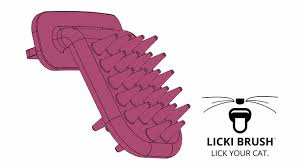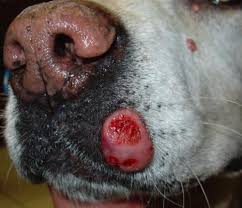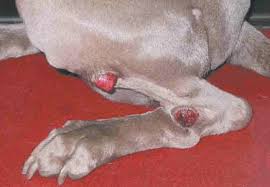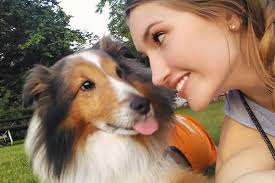Justin Beaver Doesn't Make A Good House Guest
Brigette Brouillard, Second Chances Wildlife Center
 Brigette Brouillard lives in Kentucky and runs Second Chances Wildlife Center where she rescues and rehabs wild animals. At any moment you could see an opossum scurrying through the house or 'Justin Beaver' building a dam out of toys and household furniture. One of her two human children are on-board, even following in her footsteps. The other wants nothing to do with mom's hobby. Brigette tells her story like any proud rodent mama would!
Brigette Brouillard lives in Kentucky and runs Second Chances Wildlife Center where she rescues and rehabs wild animals. At any moment you could see an opossum scurrying through the house or 'Justin Beaver' building a dam out of toys and household furniture. One of her two human children are on-board, even following in her footsteps. The other wants nothing to do with mom's hobby. Brigette tells her story like any proud rodent mama would!
Justin Beaver, whom she calls "JB", came to Brigette in May of 2000, so he has been with her for quite some time. He came when he was just a couple months old and was so tiny, he was still being bottle-fed. JB was supposed to make his way to their rehab center that houses all of their animals, but they were a little slow on the draw. They needed to raise quite a bit of money for his enclosure and get a pond built, which is now in its finishing stages.
Brigette says that JB was found as just an orphan baby all alone. Most likely his parents were either shot or they were drowned. When people find beavers, they don't always like having them around. People are also not very tolerant on trapping and relocating them. So beavers are trapped underwater and they are usually drowned.
Beavers live around 20 years in captivity. They don't live quite as long in the wild of course, because they're exposed to potential risks that they don't in captivity.
JB has had the run of Brigette's house and is far from the perfect houseguest. Brigette explains that she moved into a new house just a couple of months prior to getting JB. She said it used to be very nice but now almost every doorway, door and baseboard has been chewed on. Even her antique furniture has been chewed on. She said this all happens very fast, even with her closely supervising JB.
 Brigette explains that JB needs to be in water, so she puts him in the bathtub about five times a day. She says this makes it very difficult for her to go out for very long stretches. When JB gets out of the bathtub, he tries to dam it up. She says it's really kind of a funny routine that they have developed. Brigette knows when he needs to go out for his regular times and he does make some sounds when he really does need to go to the bathroom. So she puts him in the bathtub and when he is done, he hops on the ledge, but he won't get off the ledge. She has to lift him down. She then towel dries him and then he turns around and finds something to dam up the bathtub. These items may include shampoo bottles, a nearby towel on the floor or even the bathroom rug. He also uses stuffed animals and socks. Brigette explains that if there's one thing lying out, he'll find it. However, his new enclosure is almost ready and he'll have his own pond that he can go to the bathroom in and dam up over and over throughout the day.
Brigette explains that JB needs to be in water, so she puts him in the bathtub about five times a day. She says this makes it very difficult for her to go out for very long stretches. When JB gets out of the bathtub, he tries to dam it up. She says it's really kind of a funny routine that they have developed. Brigette knows when he needs to go out for his regular times and he does make some sounds when he really does need to go to the bathroom. So she puts him in the bathtub and when he is done, he hops on the ledge, but he won't get off the ledge. She has to lift him down. She then towel dries him and then he turns around and finds something to dam up the bathtub. These items may include shampoo bottles, a nearby towel on the floor or even the bathroom rug. He also uses stuffed animals and socks. Brigette explains that if there's one thing lying out, he'll find it. However, his new enclosure is almost ready and he'll have his own pond that he can go to the bathroom in and dam up over and over throughout the day.
While most people have family pics on their walls, Brigette actually has pictures of her animals. One is a painting done by her volunteer team of an opossum that she had for a long time named Big Boy. She also has another picture of three skunks. They are her permanent resident education skunks. She calls that picture "her three sons." However, she does explain that she also has pictures of her human son and daughter on the wall right next to them.
Brigette's two children do not love having animals in the house. In fact, JB regularly jams up her daughter's door. When her daughter tries to open her door, she has to move all of the stuff out of the way before she can fully open it.
Second Chances Wildlife Center runs solely on donations. To donate and help out you can go directly to their website where you will find their address to send a check as well as a PayPal account.
Visit Website
Product Lets You Lick Your Cat - Without the Furballs!
Tara O'Mara, LICKI Brush
 We all know grooming has incredible bonding effects. Tara O'Mara and her hubby Jason invented an over-sized tongue-shaped brush that humans may put in their mouth allowing them to groom their kitties, just like their mom. They've almost raised the $36,000 in a Lickstarter.... we mean Kickstarter campaign.
We all know grooming has incredible bonding effects. Tara O'Mara and her hubby Jason invented an over-sized tongue-shaped brush that humans may put in their mouth allowing them to groom their kitties, just like their mom. They've almost raised the $36,000 in a Lickstarter.... we mean Kickstarter campaign.
They have created the LICKI Brush, which is "A high-quality, soft silicone brush, designed to feel pleasurable to your cat's sensitive skin." That you stick in your mouth, and use like a giant faux cat tongue so you can literally lick your cat happy.
Not surprisingly, Tara has been asked previously if there was alcohol involved when coming up with this invention. She says definitely not - her and her husband, Jason, are just that crazy about their cats!
Tara and Jason are constantly thinking of the next big way that they can improve their cats' lives. They especially try to improve the lives of indoor cats, as they are sometimes socially isolated and grooming is such a big part of their day. She also states she watches her cats groom each other and it just seemed obvious to them to come up with this invention as a way to lick them back.
 The LICKI Brush brings you and your cat closer. By using LICKI Brush on your cat on a regular basis, you'll develop a more intimate and bonded relationship, much like a mama cat bonds with her young.
The LICKI Brush brings you and your cat closer. By using LICKI Brush on your cat on a regular basis, you'll develop a more intimate and bonded relationship, much like a mama cat bonds with her young.
Tara states that her cats love it! That's when they knew they had a hit.
They have started a Kickstarter page and you can help support the project by going to LickiBrush.com. The LICKI Brush is in pre-production and the final version will be pink, so you don't fool your cat and they really think it is your tongue.
Visit Website
How to NOT Train a Dog - Dr. Debbie
 The other day I was walking my dog in a community area and encountered a lady with two Shih Tzus. As we approached, her dogs rallied with barking and tugging on their leashes. I asked if her dogs were friendly, so as to decide if we could approach. The lady scowled, embraced her still barking dogs and grumbled, "Do they look like they're friendly?"
The other day I was walking my dog in a community area and encountered a lady with two Shih Tzus. As we approached, her dogs rallied with barking and tugging on their leashes. I asked if her dogs were friendly, so as to decide if we could approach. The lady scowled, embraced her still barking dogs and grumbled, "Do they look like they're friendly?"
Realizing this dog owner was more unsociable than her dogs, I decided to vamoose, but not before I envisioned this blog topic - how pet owners mold unsocial dog behavior.
Unwanted doggie behavior such as lunging and barking on the leash become established when the dog owner hasn't made it clear what the appropriate behavior is, fails to correct and redirect to a more suitable behavior, or simply reinforces the undesirable behavior through actions or words. Face it - there aren't bad dogs, just poorly trained ones.
Avoid making these top 5 training mistakes:
1. Secluding Your Dog in the Backyard
Keeping your dog in lock down almost guarantees problem behaviors will develop such as biting, inter-dog aggression and phobias to anything from noises to car travel. Isolated dogs lack the experience and confidence when faced with novel situations while socialized dogs adapt easily.
I see it all the time - the dog owner prides herself in keeping her dog safe. "I didn't want Fido to catch any diseases as a pup, so I didn't let him out of our backyard till he was a year old." The overwhelming fear of infectious diseases like parvovirus causes some well-meaning owners to confine their new dog or puppy to the limits of house and yard. Even more extreme is never allowing a puppy to step foot outside until after their last puppy vaccinations! Puppies are most adaptable to new experiences between 6 and 16 weeks - this is the time to expose them to unfamiliar places, people and animals.
That doesn't mean you should take your eight week old puppy to dog parks, but rather to use good sense selecting low dog traffic areas and visiting with family and friends outside of the home that have properly vaccinated pets.
2. Skipping Obedience Training
Going to school is a must for any new dog to a home, whether a puppy or adult. No two dogs are the same, and each learns differently. Formal obedience training is a useful tool to gently reaffirm who's in charge and sets the rules in the house. Statistics show that dogs that go through formal obedience training are less apt to develop behavior problems and be relinquished to shelters.
 3. Reinforcing Fear at the Veterinary Office
3. Reinforcing Fear at the Veterinary Office
In the exam room I cringe when I see a dog owner comforting a nervous, fearful or aggressive pet. That "good boy" and pat on the head reinforces your dog's behavior, making it more likely that on the next hospital visits he'll behave the same, or worse. Some problem behaviors escalate making it difficult for the veterinary staff to examine or treat the animal. This may mean additional costs for sedation or anesthesia for routine medical needs.
It's natural for a pet owner to want to reassure a pet when he is frightened and it can be difficult to hold back the urge to soothe him. However, the best strategy is to ignore those fearful behaviors in the vet office. Don't be tempted to kiss, snuggle or hold Fido on your lap when he is misbehaving. Rather, place the dog on the floor, refocus your dog's attention to you, and cue him to "sit" or "lie down."
4. Not Using Food as a Reward
Food shouldn't just be for the taking. Don't leave food out for your dog to graze whenever he wants and don't give treats just for the sake of giving a treat. Present food and treats as a reward for good behavior such as sitting quietly, going to a pillow, or performing a trick or obedience work. This places you at the top of the household hierarchy. You become the provider of great edibles in the house, and your dog will be motivated to listen to your requests in other situations.
We all love to spoil our dogs and give treats at times. But be sure to give treats for a reason, or you will have a spoiled doggie brat on your hands.
5. Not Exercising Your Pet Enough
Inadequate exercise can result in obesity and boredom, and may lead to problem behaviors like separation anxiety, destructive chewing and excessive barking. Dogs should get 30 to 60 minutes of sustained physical activity each day for optimum mental and physical benefit. And no - letting Buffy run around the backyard during the day is not adequate exercise.
Not all breeds are cut out for all exercise - a Labrador may enjoy retrieving games or swimming, a Jack Russell terrier may thrive with jogging or Frisbee, while a Basset hound will be satisfied with a leash walk.
Your dog can't be a well-adjusted, socialized canine citizen without you, as the pet owner, taking an active role in training. Put the time in, and you'll be thanked many times over with an outgoing, friendly canine pal that can accompany you on life's adventures.
Featured veterinarian known as "Dr. Debbie" on national pet radio program, Animal Radio. Ebook author of "Yorkshire Terriers: How to Be Your Dog's Best Friend"; "Pugs: How to Be Your Dog's Best Friend"; "Mini Schnauzers: How to Be Your Dog's Best Friend"; and "Shih Tzu: How to Be Your Dog's Best Friend." Dr. Debbie's books.
Visit Website
Top Daily Pet Cancer Awareness Tips
Robert Semrow, Animal Radio Listomania
 Pet Cancer Awareness is more than a month-long event for me. In fact, it's been a part of my life for several years now as both of my dogs developed cancer.
Pet Cancer Awareness is more than a month-long event for me. In fact, it's been a part of my life for several years now as both of my dogs developed cancer.
Zoey had successful surgery to extend her life, but still has cancer. As some of you know, my best friend and inspiration, Sugar, passed away just 10 days after being diagnosed with cancer.
So for me, cancer is more than something that millions of dogs and cats get, it's something that changed my life and my pets' lives forever. I want to keep awareness going for the people and pets we care about, you, our animal radio listeners:
The numbers are staggering and the impact is numbing. To begin there are more than 100 types of cancers in pets. Cancer can be found in our pet's skin, bones, breast, head, neck, lymph system, abdomen and testicles to name some of the more common areas. That's a lot of places where it can occur and present itself. Thus the importance of weekly Snout-to-Tail checks.
If you get that unfortunate cancer diagnosis, it is not a death sentence. Work with your vet to find the treatment program that fits best for you and your pet. There are many ways to treat and address cancer in a pet. Many of them are terms you have heard for human patients including surgery, chemotherapy, radiation, cryotherapy and hyperthermia and more.
I know that when Zoey was diagnosed it was at an early stage and her vet noted that I was a vigilant pet parent to notice it. That would not have been the case without speaking to so many wonderful, devoted experts in this field and listening to them about what to look for. So to pay it forward, I'm sharing a few common signs that should raise concern and spark a discussion with a qualified veterinarian and/or specialist.
 Abnormal swelling that persists or grows, loss of appetite, weight loss, loss of energy or stamina, difficulty in breathing or going to the bathroom or bleeding or discharge from any body opening. All of these should naturally raise a red flag that something is out of the norm and you need to discuss it with your veterinarian. Again, don't panic or get wildly emotional as your pet, your vet and your family need you to have the strength and clarity to be the pet parent your pet trusts you are.
Abnormal swelling that persists or grows, loss of appetite, weight loss, loss of energy or stamina, difficulty in breathing or going to the bathroom or bleeding or discharge from any body opening. All of these should naturally raise a red flag that something is out of the norm and you need to discuss it with your veterinarian. Again, don't panic or get wildly emotional as your pet, your vet and your family need you to have the strength and clarity to be the pet parent your pet trusts you are.
Sadly, this is something that many of will experience due to a variety of factors and there is no simple answer to the question we will all inevitably ask - Why and how did this happen?
Thankfully, there are many ways to address it and many who are working on even more solutions. The word cancer is scary and devastating, but I leave you with this gem from Alfred Lord Tennyson - "Tis better to have loved and lost than never to have loved at all."
It's a good idea to be aware of the signs and seek out solutions for your individual pet. And never forget how lucky we are to have them in our lives for as long as they are with us. Share your pet cancer tips and more on our Animal Radio Facebook Page.
Visit Website
The Dogfather's Grooming Tip with Joey Villani
 Summer Swimming
Summer Swimming
Our dogs love the water! Summertime usually means lots of chances to go swimming in the ocean, lakes and swimming pools. But each one has inherent risks, especially lakes. Dogfather Joey Villani will tell you what you need to know before your furry-companion takes the dive.
Now that it's getting warmer, you probably won't think twice about taking your dog swimming in a pool, a lake or even the ocean, then piling them up in the car for the ride home. While in most cases this shouldn't be a problem, there are times when you should be concerned for your pet.
Let's start with saltwater. Saltwater is probably the easiest on your dog's coat and skin, because it is similar to their bodies. However, you still want to rinse it out of their coat, because excess salt in their coat can build up and may cause matting and /or irritation when it stays on their coat. People think that just by rinsing the coat they remove this problem. Not so. You really need to shampoo and condition their coat. If your dog swims every day, this might not be an easy task, so you should clean them as frequently as possible.
If your dog swims in a pool, you will have the same problem and should shampoo your dog after swimming. The chlorine will build up on their coat. In addition to the matting, on dark colored dogs, you will notice that the coat will start to lighten and you may even see a reddish tint.
Many dogs swim in lakes without any problems, but then you have a dog that ends up at the vet's office with things like bacteria infections if they have sensitive skin. Again, you should use a gentle shampoo and it doesn't have to be an anti-bacterial shampoo,
Just make sure you thoroughly clean your dog's coat after all types of swimming.
Animal Radio News - Lori Brooks
 "Whale Vomit" Beer
"Whale Vomit" Beer
An Australian brewing company has incorporated rare and expensive "whale vomit" into a special new beer. It's excreted by sperm whales and most commonly used in perfumes to make the scent last longer. In this new beer, the brewery says the whale vomit, "Adds a pungent, animalistic aroma… full body, caramel malt and fruity flavors and very balanced bitterness." The idea for the beer was inspired by the discovery of a lump of whale vomit on a beach which is fetching the finders about $70,000, because it's that rare.
What Do You Do To Make Your Cat Happy?
I build cat condos out of a tablecloth over a nightstand, build things out of cardboard boxes and I let them play in paper bags when they used to be around. You probably groom your cat. My Parker loves being groomed and head buts me while I'm brushing him. And my other cat, Jackie, who is nicknamed Yackie because she talks a lot, loves me to rub my chin on her head like I've done since she was a kitten. But now there's something that takes Jackie's delight to a completely new level. It's called LICKI Brush and it hasn't even been released yet, but you can see a video on KickStarter. It's a tongue-shaped cat brush! You actually hold the handle in your mouth and use the tongue shaped brush to "lick" and groom your cat.
 Dogs Rescued From Dog Meat Festival
Dogs Rescued From Dog Meat Festival
Animal activists in China recently rescued 200 dogs that would have been killed for the annual Yulin Dog Meat Festival, which starts June 21st. Despite worldwide outrage, global social media coverage and 100,000 Chinese citizens protesting the event inside the country, the event will be held again this year. But, because of the sustained pressure, the number of dogs killed for the dog eating event has dropped about 80-percent according to Animals Asia, a group working to end the festival and the entire dog and cat meat trade in Asia. The people of Yulin have celebrated the Summer Solstice with the so-called Dog Meat Festival since the 1990's.
Benefits to Delaying Spaying or Neutering
A new study published in the journal Veterinary Medicine and Science finds that neutering or spaying German Shepherds before 1 year of age triples the risk of one or more joint disorders, particularly for cranial cruciate ligament, or CCL, tears. The study was done at UC Davis School of Veterinary Medicine. The lead researcher said they found simply delaying the spay/neuter until the dog is a year old can greatly reduce the chance of a joint disorder. Another study two years ago revealed a four times greater increase for joint disease is also true for Golden Retrievers spayed or neutered before one year old and a 2 times increase for Labs. That's because neutering removes male and female hormones that play key roles in important body processes like closure of bone growth plates, which doesn't happen until a dog matures. There are of course trade offs, the study found mammary cancer was diagnosed in 4-percent of intact females compared with less than 1-percent in females neutered before 1 year of age. Also, urinary incontinence, common in older dogs, was NOT diagnosed in intact females, but 7-percent of females neutered before age 1 year had it. Dog owners in the United States typically choose to spay or neuter their dogs prior to 6 months of age, in large part to prevent pet overpopulation or hoping to avoid unwanted behaviors.
 Visiting Vet Student Saves Dog From Wrongful Euthanasia
Visiting Vet Student Saves Dog From Wrongful Euthanasia
A visiting medical student at an Oregon animal hospital found a tick hidden behind a dog's ear right before she and a veterinarian were scheduled to put the dog to sleep over his ailing health and paralysis. The owners of 10-year-old Ollie the Sheltie noticed he was lethargic and not getting around well following a hiking trip in Oregon. They took him to their regular vet for tests, but they could not figure out what was wrong. A vet student said she thought it was odd that Ollie still had a little sparkle in his eyes though he couldn't really move. His expressions were lively and responsive even though he was completely paralyzed and unable to eat or even go to the bathroom. So, they were getting ready to euthanize Ollie and the student was comforting him. While she was petting him, she felt a strange lump behind his ear that turned out to be a tick that was very bloated and had obviously been there for a while. The vet said it was then that he figured out Ollie's sickness was a very rare condition called tick paralysis. The saliva secreted by the tick got into Ollie's system over a prolonged period of time, affecting his neurological system and causing paralysis. Hospital staff removed the tick and shaved most of Ollie's fur to make sure there were no other ticks hiding in his fur. About 10 hours later Ollie was back home roaming around the house and even went over to the door to be let outside.
 Listen to the entire Podcast of this show (#1075)
Listen to the entire Podcast of this show (#1075)





